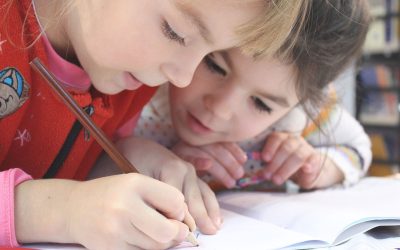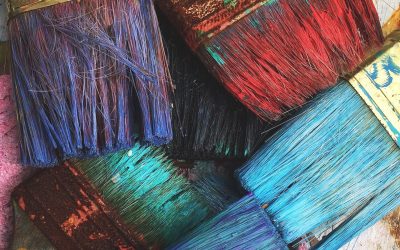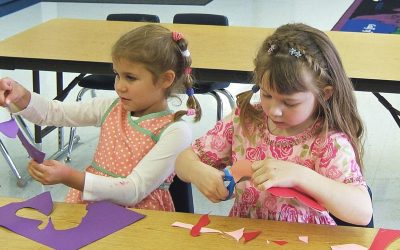Pens vs. paintbrushes. Compelling words vs vivid strokes. What underlies creativity for writers? For artists? Are there commonalities? How can parents and teachers nurture children’s creative expression? Here’s a candid dialogue between an author (Joanne Foster), and an artist (Rina Gottesman).
A writer stares at an empty page or stark keyboard. An artist gazes at a blank canvas, or perhaps a piece of marble or clay. The tools they use to communicate may differ but they both begin with a desire to convey ideas, feelings, and experiences.
My friend Rina Gottesman is an acclaimed, award-winning artist. She creates gloriously colorful abstract paintings. I asked her to think about the following question:
What’s the best way to spur children’s creative expression?
Rina responded thoughtfully, and with considerable detail. She focused on many different points. Here is a glimpse into our conversation.
Rina: Every child has the ability to do something creative, be it to put together an outfit to wear to school, pick out ingredients for a salad, or even select what color crayon they want to use to make a dot on a piece of paper! With practice and encouragement we can fan even the smallest spark into a creative fire.
Joanne: I agree that it’s important to believe in a child’s abilities, and to offer choice and support. And, it’s good to start early. Do you recall your first creative experience?
Rina: My earliest memory of creativity occurred one summer when I was eight years old. A visiting relative brought me a gift of a small box of watercolor paints and a booklet of white paper. I can remember lying on my stomach for hours on our front porch discovering the magic that happened when my wet paintbrush touched the surface of the small hard palettes of paint, and then touched the surface of the paper. The spark in me was ignited!
Joanne: You refer to the “magic” of discovery. E. P. Torrence says it well: “One of the most powerful wellsprings of creative energy, outstanding accomplishment, and self-fulfillment seems to be falling in love with something—your dream, your image of the future.” You were smitten by the colors, and passionate about the possibilities. There were no rules or constraints. There was joy and excitement in being able to create.
Rina: I am an abstract painter. I feel blessed to have this outlet for creative expression. I rarely have a preconceived idea of what I want to paint. Each painting begins with the stroke of one color on the canvas. The painting takes shape as I respond to that mark with another mark. Each stroke of color is met with a new response from me. My mood that day will be reflected in the colors I choose, and any music playing in the background may influence the kind of mark I make. No two paintings are the same because no two moments are the same. I trust the process and just play!
Joanne: Play is a foundation for exploration, discovery, invention, and creativity whether you’re a painter, musician, sculptor, dancer, photographer, or writer. Unstructured learning opportunities are springboards for the more structured requirements (like effort, perseverance, resilience) that are ultimately necessary to attain goals.
We both spend countless hours on our chosen craft—honing, revising, and not knowing what the final product will look like. In the end, what really matters is being open to the experience of playing with colors or words, and creating something original. That’s what’s fulfilling.
Rina: With painting, each artist has his or her own way of beginning. Some start with a plan, some work out their ideas on paper before they begin, others like me begin with no preconceived plan. For each approach, artist, and painting, the process differs and therefore the ‘exhilarating’ moments differ. Having no idea where I’m going can be scary yet exciting. I just allow the painting to lead me where it wants to go. Eventually thinking will take over as I apply the principles of design and incorporate these elements into the finished painting but this initial spontaneous stage is the creative process at its exhilarating best!
Joanne: There’s no “one way” that provides a surefire gateway to creative expression. However, as a writer, I recognize and understand the exhilaration that you describe—I experience it when I start a piece, as it evolves over time, and as I refine it. For me, the initial stages are more of a juggling act than a rush. I write down multiple and often abstract ideas, check sources, and flesh out my ideas. Like you, Rina, I rarely start with a fully defined framework. And, sometimes I walk away from writing to take a break or gain perspective, then come back to it anew. (Or as you state, “Energy and and spontaneity can suddenly come to a screeching halt at which time I need to put the brush down, step back and look at the painting critically… in order to try and come up with solutions to make the painting work.”)








